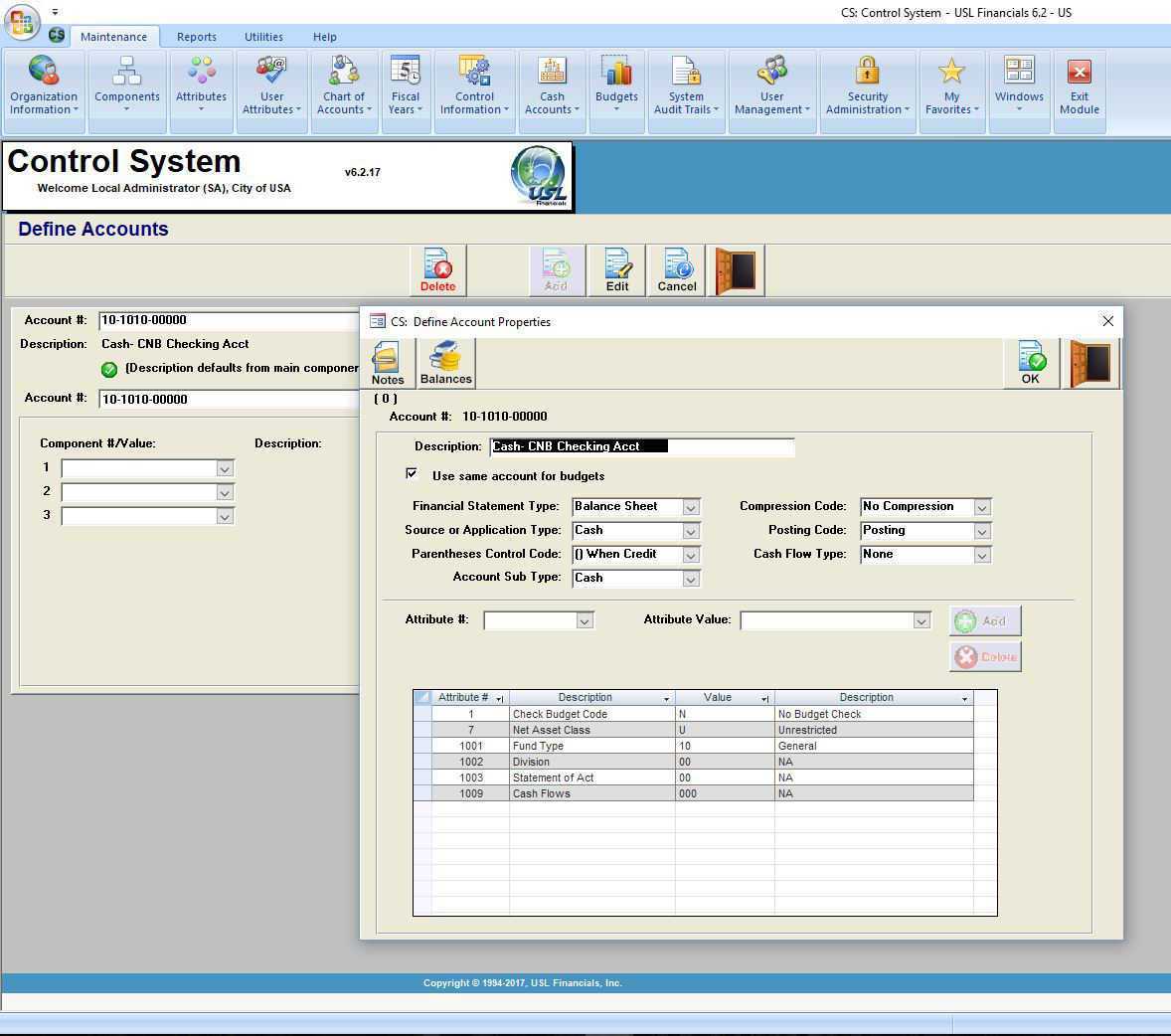The Control System module is the heart of the USL Financials accounting system. In Control System, you set up the basics of your financial structure: organizational data, components, chart of accounts, accounting periods and budgets.
The Control System module allows true integration of any USL Financials modules at any time. All accounting modules can be used either as standalones or as a fully integrated system in combination with other mod-ules. Because they have elements in common, combining these elements into one Control module makes the entire system more efficient. Adding modules at a later date, for example, becomes much easier: all the basic data needed for your company is already entered and available to the new module.



